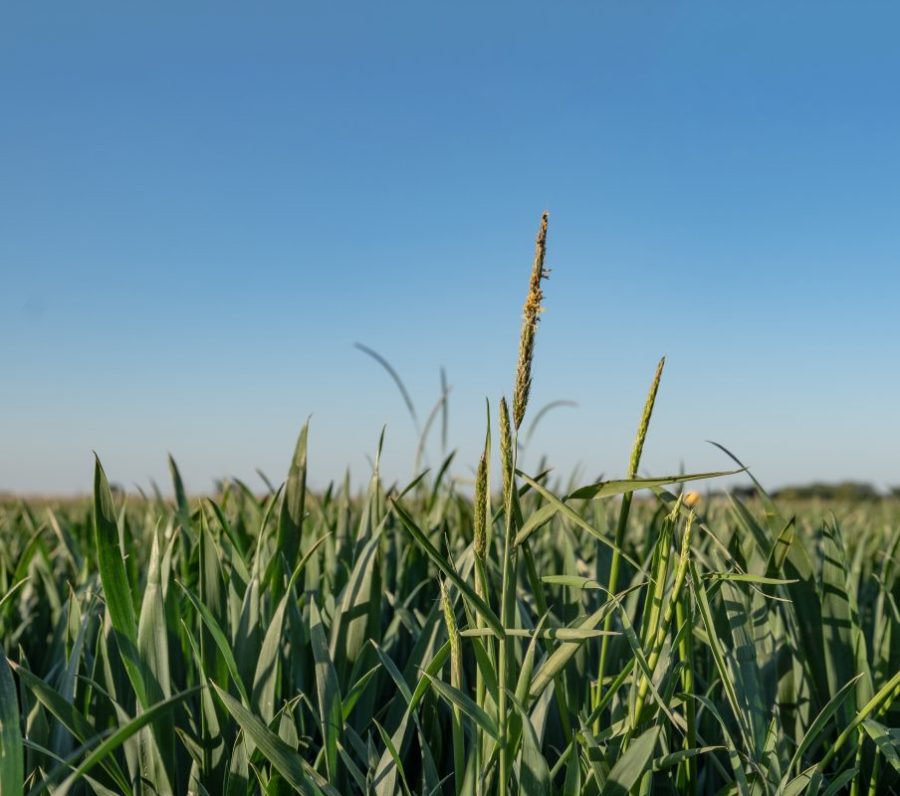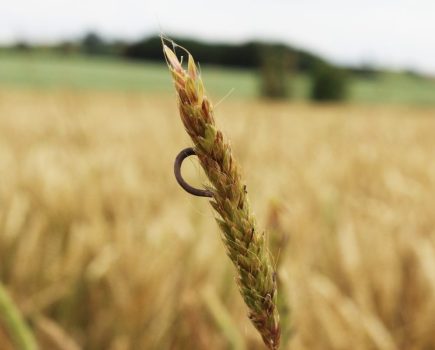Following a few challenging years for grassweed control in cereal crops, it seems on the whole, growers are getting back on track. CPM taps into the latest survey data to understand whether this is the case, and if so, how growers have achieved it.
“Despite a good control year, the weed seed-bank will remain so it’s crucial the work continues.” DR SARAH COOK
By Janine Adamson
While in most cases, autumn 2024 was a mixed lot in terms of weather conditions, the general consensus is, growers were presented with adequate windows to get on and set crops up for success.
Whether this meant optimising drilling dates to utilise stale seedbeds, or ensuring timely applications of pre-emergence herbicides, it’s a stark contrast to previous seasons where inclement conditions meant grassweeds could proliferate.
And according to a recent survey undertaken by CPM and BASF, being able to successfully achieve the fundamentals of weed control is being reflected in the pressure experienced on farm. In the case of blackgrass, 60% of participants stated populations are lower now than what they observed last season.
Reflecting on this, Dr Sarah Cook of ADAS says given the opportunity, it’s clear growers know what to do and are therefore reaping the results. “While it’s season-dependent, it’s a positive story overall for weed control this year.
“Allowing a stale seedbed without delaying too much to compromise crop vigour is key, as is using autumn-applied residual herbicides in a timely and appropriate manner; the basics are very effective.”
However, she reminds that this is only one season. “Despite a good control year, the weed seed-bank will remain so it’s crucial the work continues to maintain that control. Blackgrass can persist for up to seven years in the seed-bank, so don’t take your eye off the ball.
“Remember, it’s not a single battle with grassweeds, it’s a continued war. As seen reasonably recently, it doesn’t take much to stack up to a failure,” stresses Sarah.
For one, the survey backs up the popularity of a stale seedbed – of those who use them, 57% said they were satisfied with the weed flush this autumn, conversely, just 18% of participants said they don’t use the technique.
Association of Independent Crop Consultants (AICC) member, Colin Woodward, is an agronomist and former farm manager based at Great Tew. He says all his farming customers now use stale seedbeds.
“Add in slightly later drilling (late October/early November), plus residual chemistry working effectively, and we have some of the cleanest wheat crops I’ve ever seen,” he highlights.
As for residual herbicide applications, 71% of those surveyed said they were able to spray on time, an uplift of 14% compared with the 2023/4 season (using historical survey data). Just 5% of participants stated they didn’t use any residual chemistry at all.
BASF’s business development manager, Stuart Kevis, believes this indicates growers understand the importance of the pre-em timing in reducing grassweed pressure. “It’s what’s required for successful weed control, so this is very encouraging. The data shows the aim and intent is to achieve that pre-em timing.”
The perceived drop in blackgrass count also appears to be having an impact on what’s required from other IPM techniques, with the survey suggesting a 7% reduction (from 55% to 48%) in the use of spraying off high pressure areas this year, compared with 2023/24. However, 57% of participants still use roguing.
Despite this, roguing is something Colin says many of his customers don’t undertake due to a lack of labour. “But in my region, the control has been so good that it’s not been required this year anyway.”
He also stresses that spraying off problem areas will always have a role. “If pressure is high, doing this is essential to ensure weed seed isn’t returned during the following year.”
When it comes to rotational ploughing, around 60% of survey participants said they’ll continue to use this, while 65% have plans to utilise spring cropping. But something that growers anticipate will reduce year-on-year, is the use of delayed drilling.
In 2024/25, delayed drilling was used by 63% of those surveyed, yet only 54% plan to do so in 2025/26. Stuart believes there could be various reasons behind this decision.
“For one, given the early harvest this summer, it doesn’t surprise me that more may wish to get going and plant their wheat in September. Equally, some may have been caught out by the weather the past few autumns so don’t want to take the risk and miss out altogether.”
To provide more detail on this, the survey reveals that of those who took part, 19% plan to drill their winter wheat in the second two weeks of September, 50% in the first two weeks of October, 25% in the second two weeks of October and 3.5% in the first two weeks of November.
Sarah points out that rather than using the early harvest as an opportunity to plant early, the spare time between rotations could prove useful. “This is when growers can look at the condition of their soils and take remedial action; there’s no need to race to drill.”
Colin admits that many of his customers are keen to plant crops as soon as is feasible this autumn. “While it’s very dry at the moment, if conditions permit, I know growers will want to drill earlier than usual.”
Perhaps interestingly, the survey indicates making soil drainage improvements is slowly rising up the agenda for some growers. 38% shared they plan to do this for 2025/26, compared with 33% having done so in 2024/25.
According to Stuart, it’s again unsurprising given autumn conditions the past five years or so. “Lessons have been learned. Equally, drainage mapping technology has evolved considerably, and allows the accurate identification of problem areas more easily.”
While acknowledging the importance of good drainage, Colin adds that it all comes down to cost and whether the land is rented or owned. “It’s not an option for everyone; in some cases you may be better going down the SFI or stewardship route to mitigate the effects of poor drainage rather than invest in rectifying.”
When asked about herbicide choices, 59% of those surveyed revealed they either used, or advised the use of, a cinmethylin/Luximo-based product (such as Luxinum Plus) on their winter wheat area this year. This presents an increase of 9% year-on-year (using historical data).
Stuart says this is a strong story and demonstrates that peer-to-peer endorsements are taking place. “Luximo is the strongest base for those with a blackgrass or ryegrass problem and this is beginning to show, plus now, those good experiences are being shared more widely.”
This is because the product has fitted well within the portfolio of available herbicides, suggests Sarah. “Furthermore, growers seem to be using it responsibly which is encouraging to see.
“We’re better informed about how to control grassweeds, including the importance of diversification, whether that’s cropping or active ingredient use.”
Colin adds that where he’s advised the use of Luximo, growers have been very satisfied with the results. “It does what it says it does. You just have to be mindful that because of it being root-active, seedbed conditions must be suitable, including ensuring adequate soil coverage of the seed.
“This is to avoid potential crop safety issues, especially on lighter soils or where seed has been direct drilled. I use it both pre- and post-em depending on the specific farm situation; I’ve been very happy with the results,” he says.
And according to the survey, growers agree – of those who used Luximo this season, 85% stated they were satisfied with its performance. Colin highlights that while this is important as a future looms without flufenacet, protecting Luximo from succumbing to herbicide resistance issues will become even more crucial.
“By continuing to use flufenacet while we still have it, as well as utilising other available modes of action, we can safeguard the valuable chemistry that we have remaining. Luximo has been a game-changer but there’s so much more to effective weed control, based on an IPM-led approach.”
This article was taken from the latest issue of CPM. Read the article in full here.
For more articles like this, subscribe here.
Sign up for Crop Production Magazine’s FREE e-newsletter here.




